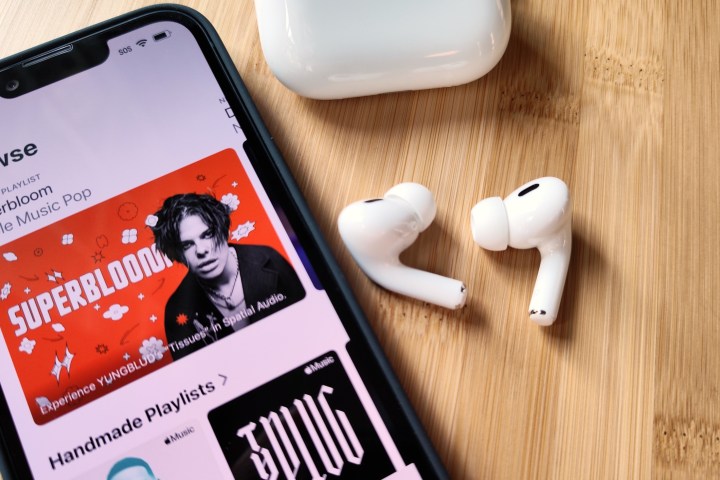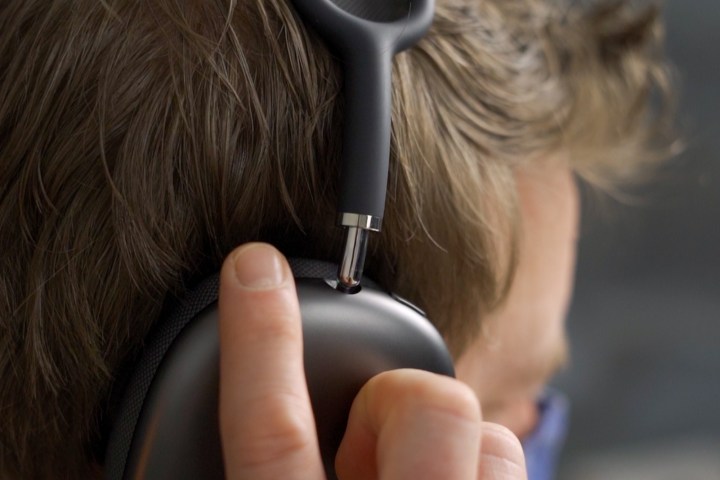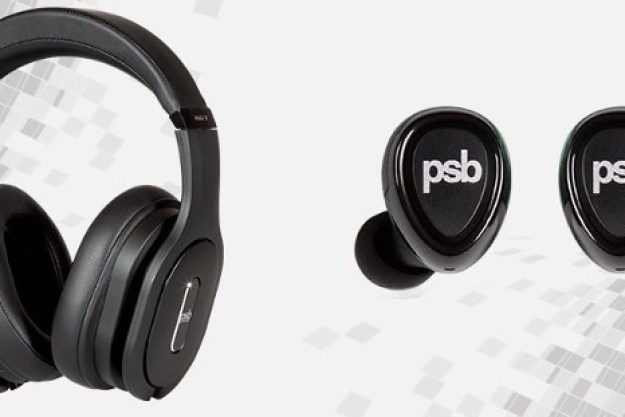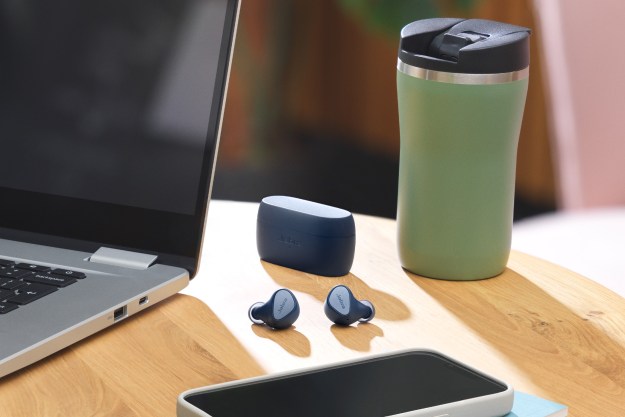As we get closer to Black Friday and the 2022 holiday season, there’s probably at least one person on your gift-giving list who would like a new set of headphones. And unless this person has sent you a link to the specific headphones they want, it’s now decision time, and you’ve got to figure out which one of the thousands of options to buy.
- It’s more than just music
- Wired or wireless?
- Android or iPhone?
- Water resistance: a little or a lot?
- Specialty headphones for active users
- Battery life: How much is enough?
- Comfort and fit
- Sound quality
- Active noise cancellation and transparency
- Are you buying for a gamer?
- What about headphones for kids?
- Extra, extra!
- How much do you need to spend?
You could start by checking out our roundup of the best headphones and the best true wireless earbuds — you won’t go wrong with any of the products on these lists. But sometimes, some more tailored advice is helpful. Let’s talk about what makes a good pair of headphones and how to know you’re getting the right ones for someone else.
It’s more than just music

When buying headphones for someone else, keep in mind that these devices have become more than just a way to listen to music. With available features like active noise cancellation (ANC), transparency mode, access to voice assistants, spatial audio features, personalized sound, improved call quality, water and dust resistance, wireless charging, and much more, today’s headphones and earbuds have become multifunctional accessories for both work and play (and everything in-between).
If your intended recipient has told you which features matter to them, congrats, your job just got a lot easier. But if you have no idea, you’ll need to make some educated guesses based on who they are, what they spend their time doing, and even the kinds of locations or conditions they’ll find themselves in.
- The best headphones
- The best noise-canceling headphones
- The best true wireless earbuds
- The best noise-canceling true wireless earbuds
- The best wireless headphones for TV
Wired or wireless?

When smartphones all had headphone jacks, this choice came down to personal preference, with hardcore audio enthusiasts generally preferring wired headphones or earbuds for their superior sound. But today’s phones have all but eliminated the headphone jack, making wireless not only more convenient but far more compatible with most devices. And advances in headphone technology mean that wireless headphones like the Sennheiser Momentum 4 can have some of the best sound we’ve heard this year while still being entirely wireless.
Though rare on true wireless earbuds, many over-ear and on-ear wireless headphones come with a built-in analog input and a headphone cable, giving you the best of both worlds.
Android or iPhone?

Can someone’s choice of smartphone affect the kind of headphones they should use? The answer, surprisingly, is yes — but it’s a nuanced yes.
Many iPhone owners are fond of using the device’s built-in Siri voice assistant for everything from making phone calls to setting reminders. And while most headphones offer a way to trigger Siri using a button or touch control, only a few models let you do this hands-free by saying, “Hey, Siri.” Apple’s own AirPods family does this, of course, as do other models like Beats headphones, some Jabra earbuds, and a variety of other models.
On the flip side, Android phone owners may want headphones that let them do the same with Google Assistant. That includes Google’s own Pixel Buds Pro and Pixel Buds A-Series, as well as models from JBL and Sony. Generally, it’s a bit easier to find headphone options for Google Assistant than Siri, although Apple has improved in this area.
If the person you are thinking of enjoys playing a lot of high-res audio and is generally an audiophile, iPhones can support MP3, AAC, ALAC, WAV, and AIFF files, as well as FLAC files through the Files app. Apple also has a variety of Dolby Atmos-compatible songs that add spatial audio and other advanced features to music, so it’s a good idea to get headphones that can handle this. However, Android phones have a few more support options, notably including the aptX Adaptive Bluetooth codec (which iPhones don’t support at all) and LDAC, which can make them better suited for superior audio experiences.
Ultimately, it’s down to someone’s preference whether they prefer iOS or Android, but you should get headphones with their platform in mind.
Water resistance: a little or a lot?

These days, most true wireless earbuds and some wireless headphones offer protection from water. But the amount of protection can vary wildly, from a little (it can deal with a few drops of water here and there, but nothing substantial) to a lot (it can be submerged in shallow water for up to 30 minutes without any harm).
These levels of protection are categorized using the IPX rating system, from IPX2 to IPX9. For even more protection, some products can deal with dust and debris, too, with the “X” in IPX replaced with another number. For instance, Jabra’s superb Elite 7 Pro are rated IP57.
How much (and what kind of) protection is needed will depend on how you plan to use the headphones. Triathletes who don’t want to remove their earbuds while swimming should probably get something that’s IPX7 or better (or better yet, headphones specifically designed with swimming in mind), while folks who just want something for their daily run can get away with IPX2 or IPX4.
Specialty headphones for active users

As we noted, some headphones have been specifically designed to work in the water or even underwater — something that even waterproof true wireless earbuds can’t always do. There are also devices known as bone-conduction headphones like the Bose Sport Open. These use speakers that are designed to send sound waves through the bones of your skull, where they make their way to your inner ear without passing by your eardrum.
It sounds freaky, but they really work. There are two big benefits to these designs: They can be made fully waterproof, and because they don’t block your ears at all, you can still hear the rest of the world perfectly clearly while you use them. This makes them great for activities like road biking or skiing, where being able to hear your surroundings is important.
Battery life: How much is enough?

This can be a tough question to answer because we all use our headphones for different amounts of time on different days and in different situations. It’s also a different question when dealing with over-ear or on-ear headphones versus true wireless earbuds.
One way to approach it is to ask what’s the longest amount of time you think your recipient will be unable to plug into a wall or power bank to recharge? If they fly frequently, they could find themselves without wall power for up to 24 hours or more. In that case, a set of headphones with only 15 hours of battery life might not cut it.
For true wireless earbuds, the question has to be divided into two parts: What’s the longest period of time they will need to wear them continuously (without the ability to put them back in their charging case), and then what’s the total time they’ll need before plugging into power? All true wireless earbuds have a “per charge” time (the longest you can go before putting them back in the case) and total playtime (the longest you can go when you factor in the capacity of the charging case’s built-in battery).
Price isn’t always a good way to judge this. Apple’s AirPods 3, for instance, cost $169 ($179 with MagSafe charging case) and get six hours per charge (less with spatial audio enabled), while the 1More SonoFlow costs $100 and has a battery that can last for up to 50 hours with ANC enabled. Definitely keep an eye on the specs if you’re looking for good battery life.
Comfort and fit

More than sound quality, features, or price, this aspect of headphones (and especially earbuds) is the most personal and, thus, the hardest to judge if you’re buying for someone else. But here are some tips that might help.
In general, over-ear headphones (where the earcups cover the ear completely) are the most universal when it comes to comfort and fit, but they also tend to be the heaviest. Sometimes weight won’t matter. If they’re well-designed, even relatively heavy models, like the $549 Apple AirPods Max, can be comfy for prolonged periods. A bigger concern is the minimum headband size. Some are simply too big for folks with small heads (or for children). Since these measurements are seldom discussed in the manufacturer’s specs, you’ll need to look for reviews that offer some kind of assessment of fit.
- On-ear headphones, which, as the name suggests, sit on the ear instead of covering the ear, tend to be lighter weight and thus more comfortable for some folks. You give up a bit of sound quality, and if the headphones offer noise cancellation, they won’t be able to cancel quite as much external sound as over-ear models. If your recipient wears glasses, they may find on-ear headphones preferable as the ear cushions won’t press the limbs of their glasses into the sides of their head.
- True wireless earbuds come in two main styles: those that use a soft silicone tip to create a seal against the ear canal, e.g. the AirPods Pro 2 (the most common design), and those that sit just inside the ear and don’t seal the ear canal, e.g. the AirPods. The canal-sealing design offers a more secure fit, better sound quality, and allows the earbuds to offer active noise cancellation (ANC) should the manufacturer include it. However, they tend to create the sense that your ear is “full,” and not everyone is comfortable with that sensation, especially if the earbuds don’t offer a good transparency mode (more on that later). The models that sit inside the ear are more comfortable (requiring almost no adjustments or twisting) and let you hear more of the outside world. But they are easy to dislodge, especially during intense physical activity, and they can’t compete on sound quality. Hardly any of these models offer ANC.
- Some true wireless earbud models come with integrated earhooks for an even more secure fit. This is ideal for athletes, but those hooks might interfere with eyeglasses because they use the same space.
- Alternatives to earhooks are wing tips — small, flexible pieces of rubber that are designed to anchor themselves within the folds of the outer ear. For most people, they provide plenty of security, but in a much smaller size and shape.
- Unfortunately, true wireless earbuds — whether they seal the ear canal or not — simply may not work for all people. The shape, depth, number of eartip sizes, and weight can all play a role in how well they fit. If your recipient has never worn this kind of headphone or hasn’t specifically asked for a certain model, be sure that the retailer offers a good return policy.
Sound quality

At the end of the day, we’re talking about devices that are used for listening to music, so you clearly want good sound quality. But that term — good sound quality — will mean different things to different people. An audiophile who spends thousands of dollars on their gear will have much higher standards than someone who has been perfectly happy using the inexpensive wired earbuds that came free with their smartphone.
And while audio quality usually gets better as you spend more money, keep your recipient’s previous experiences in mind. If they won’t be able to tell the difference between a $100 set of headphones and a $300 set, why spend that extra money? Thankfully, truly terrible sound is a rarity — even in relatively affordable headphones and earbuds — and when it happens, it’s usually the result of a poor fit, not something technically wrong with the headphones.
However, it’s still worth reading reviews to learn how the manufacturer has tuned the speakers. Some put a big emphasis on bass, which can be a good thing if you value big, boomy beats for your hip-hop-fueled workouts. But that can also be something to avoid if your recipient’s taste in music veers toward classical, jazz, acoustic, or singer-songwriter genres, as an overly prominent bass response can muddy the other elements. Our reviews will go into the details about want kind of sound profile headphones favor.
Active noise cancellation and transparency

Of all the features that have been added to headphones over the years, ANC is arguably the most in demand. It makes sense: Good ANC can significantly reduce external noise without affecting the sound quality of your music. The market has responded by adding ANC to tons of models across a variety of prices. But be sure to read reviews before buying either headphones or true wireless earbuds that promise noise cancellation.
ANC is a feature that can work brilliantly, or it can barely offer any noise reduction at all. In the worst-case scenario, turning it on can actually introduce sound in the form of a hiss — a side effect of poorly designed ANC. The only way to know where a certain model sits on this spectrum is to listen to those who have tried them.
The same thing is true of transparency mode — a feature that does the opposite of ANC by letting external sound into your ears for conversations or just general awareness of your surroundings. Transparency almost always accompanies ANC, but there are also models that offer transparency on its own, like the Jabra Elite 3. It’s a very desirable feature with ear canal-sealing earbuds because of how much external sound they can block “passively.” In fact, some of these earbuds are so good at blocking sounds you might not even feel the need for ANC. Again, reviews are your best guide to how well the transparency feature works.
Are you buying for a gamer?

Gaming headsets are an interesting category of headphones designed specifically for gaming purposes, especially more competitive gaming where people might be listening for important audio cues in a game’s sound environment or talking quickly to teammates. If you know that the person you’re thinking of wants headphones that can handle gaming, nothing less than a gaming headset is likely to work.
These models tend to have extendable microphones with chat controls, large drivers with thick padding and over-ear designs, and less of an emphasis on things like ANC. They are also more likely to come with additional features like charging stands. These headphones can still produce incredible music, but they’re a bit more specialized, and their prices indicate that, too. Take a look at our list of the best gaming headphones, where we discuss some of our favorite picks, like the SteelSeries Arctis Pro and the Astro Gaming A50.
What about headphones for kids?

Another specialty category is kids’ headphones. These are typically less expensive and designed for smaller heads, but you can also get premium features like noise-canceling. A big thing to look for on kids’ headphones is volume-limiting, which can help to prevent noise-induced hearing loss (NIHL). They’re also designed to be more durable than other consumer headphones and tend to cost significantly less.
Extra, extra!

We’ve covered the most important aspects of buying headphones for someone else, but this would hardly be a complete guide if we didn’t mention the many extra features you can find. We consider these nice-to-haves, not need-to-haves, but depending on your recipient’s lifestyle, they could take a set of good headphones and make them much more enjoyable.
Wireless charging (true wireless earbuds only): This is a convenience feature that lets you recharge the case using a Qi-compatible wireless charging mat. All earbuds that offer wireless charging can also be charged using a standard Micro USB, Lightning, or USB-C cable.
Adjustable EQ: Usually offered inside of a companion app, these settings let you alter the sound signature for a more customized balance of frequencies. Users who like to tweak their sound will appreciate a customizable EQ, not just general modes.
Find my: Popularized by Apple, this feature is showing up on lots of headphones and earbuds from other companies. It most often relies on a companion app that uses your phone’s location services to keep track of the last known location of your headphones. Some apps go the extra step of letting you sound an audible chime from your earbuds to help you find them when they end up buried and are not visible. Still others use object-finding networks like Tile to give you a much better chance of finding your missing device. As you can imagine, this feature is particularly popular for true wireless earbuds, which can be easier to … misplace.
Adjustable controls: This is another app-based feature that lets you choose which functions should be associated with button presses or touch gestures instead of working with the factory settings.
Wear sensors: This convenience feature can automatically pause or resume your music when you remove or reinsert an earbud or remove/replace your headphones.
Fast charging: Some products are designed to give you a way to quickly charge an almost-depleted battery. The times can vary greatly, from a 15-minute charge that gives you an extra hour of play time to a 10-minute charge that can give you three or more hours.
Bluetooth multipoint: A rarity on true wireless earbuds but quite common on full-size headphones, this lets you connect to two Bluetooth devices simultaneously, like a phone and a computer. It’s very handy for those who routinely need to switch between Zoom calls, phone calls, and music listening.
Hi-res audio: We touched on this above when we mentioned Sony’s LDAC Bluetooth codec. Some wireless earbuds and headphones give you the option of a much higher-quality audio signal from an Android phone. But keep in mind, having LDAC (or aptX Adaptive) is one thing, but it doesn’t necessarily mean the headphones themselves are capable of delivering a top-quality hi-res audio experience. You’ll also need access to hi-res audio content in order to hear any appreciable difference, which typically requires a paid subscription to something like Tidal, Apple Music, Amazon Music Unlimited, and so on.
How much do you need to spend?

Here’s some good news: While it’s true that the very best headphones and earbuds can cost well in excess of $200, there are tons of products that cost far less yet offer very good performance. You may have to choose some features over others, but you’ll have no trouble finding worthwhile picks for as little as $50.
Most of these will be from brands that don’t enjoy the same kind of household recognition as Sony, Bose, Apple, and others. If your recipient is especially brand-conscious, that could be a consideration, but we have no qualms over recommending companies like Anker Soundcore, 1More, Wyze, Tronsmart, Skullcandy, Marshall, EarFun, Edifier, and Back Bay, all of which have produced great products at highly affordable prices.
Editors' Recommendations
- Marshall’s latest headphones get 100 hours of battery life and wireless charging
- Raycon launches $149 Everyday Pro wireless earbuds and headphones
- Master & Dynamic’s next luxury headphones can tell you when your brain need a break
- How we test headphones and earbuds
- Master & Dynamic adds Lamborghini editions of its best headphones





